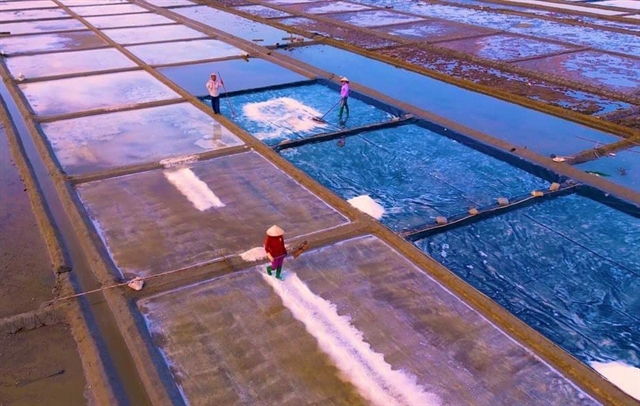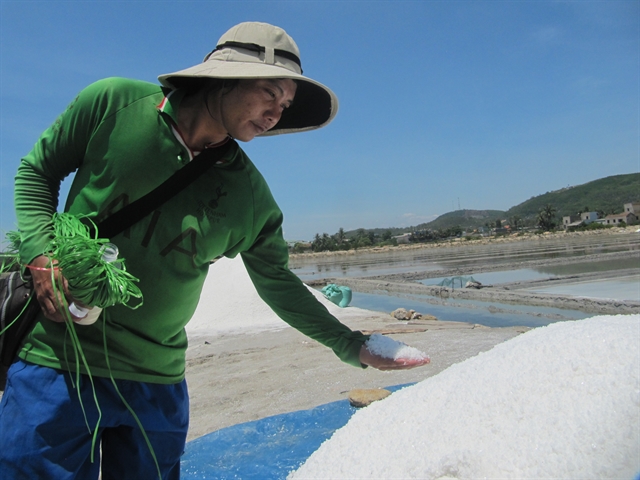 Life & Style
Life & Style

Sa Huỳnh salt trade recognised
 |
| The Sa Huynh salt fields in Phổ Thạnh in Quảng Ngãi Province. The trade of salt production was recognised as a National Intangible for its traditional cultural value and community-based tourism. Photo courtesy of Sahu |
ĐỨC PHỔ TOWN – The traditional salt making trade in Sa Huỳnh of the central Quảng Ngãi Province’s Đức Phổ Town, has been recognised as a National Intangible Heritage by the Ministry of Culture, Sports and Tourism, promoting the conservation of the craft and natural landscape in the coastal zone.
Covering 110 hectares on the most beautiful coastal area in central Việt Nam, the Sa Huỳnh salt fields – 60km south most of Quảng Ngãi Province, have been a food source for fishing villages and daily use among communities in central Việt Nam for centuries.
The product from the scenic salt fields were also exported to Europe during the French Colonial period from the 19th century.
Sa Huỳnh salt fields are still a major trade for the 1,200 farmers in Phổ Thạnh commune – the central area supplying from 650 to 700 tonnes of salt to the market each year.
Various organic high-value salt products including ‘flower of salt’ (with a surface crystalised salt layer), or fleur de sel in French, a premium quality salt, along with bamboo tube cooked salt, are OCOP (One-Commune One-Product) products making a sustainable tourism brand for the community-based Sahu co-operative.
 |
| A farmer checks salt at the Sa Huỳnh salt field in Phổ Thạnh in Quảng Ngãi Province. The trade continues to be the main income for the community of more than 1,200 farmers in the area. VNS Photo Công Thành |
Last year, the central province of Quảng Ngãi approved a project on conservation of Sa Huỳnh salt fields and community-based development in Phổ Thạnh ward, with funding from UNDP/GEF small grants programme in 2024-25.
The project aims to support community with technical assistance in promoting the conservation of salt cultivation and community-based tourism service related to Sa Huỳnh culture.
In 2023, Sa Huỳnh archaeological relics, believed to date back about three thousand years, were recognised as a National Special Heritage.
Local salt eco-tours have emerged to support community-based tourism in promoting the unique heritage of An Khê Lagoon, which is believed to have formed during the Flandrian interglacial period (from 6,000 to 7,000 years ago).
The Sa Huỳnh relic site was included in the Lý Sơn-Sa Huỳnh Global Geo-Park dossier developed by scientists, conservationists and archaeologists, earning the UNESCO global geopark recognition. VNS




